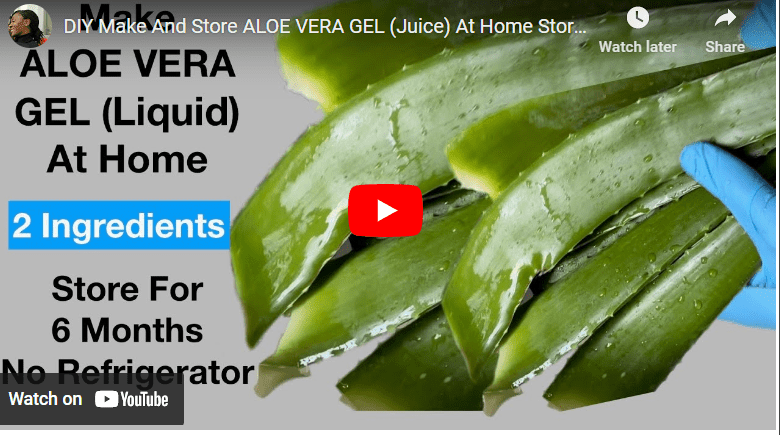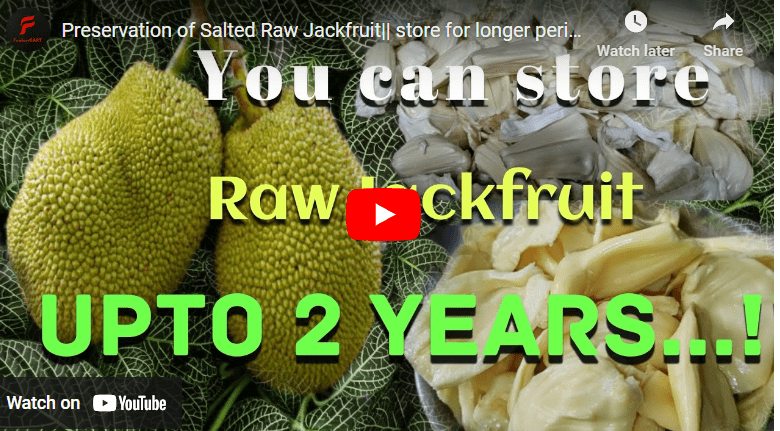Pig farming is an important agricultural activity in Kenya, and formulating pig feed is a crucial aspect of the industry.
The availability of locally sourced feed ingredients makes it possible for farmers to formulate pig feed that meets the nutritional requirements of their animals while keeping costs low.
Formulating pig feed also allows farmers to customize their feed to meet the specific needs of their pigs at different stages of growth and reproduction.
In this guide, we will explore the steps involved in formulating pig feed in Kenya, the local ingredients that can be used, the benefits and challenges of formulating pig feed, and best practices to ensure success.
How To Formulate Pig Feed In Kenya
Formulating your own pig feed is a great way to have consistent supply of feed for your pigs. Also, it serves as an additional source of income.
However, you need to learn the required steps and be familiar with the instructions on how to formulate pig feed in Kenya.
Follow the steps below to help you formulate pig feed in Kenya either for personal or commercial purpose.
Read Also: How To Formulate Pig Feed In Ghana
Step 1: Determine the nutritional requirements of pigs
If you want to formulate pig feed in Kenya, the first step is to determine the nutritional requirements of your pigs.
Keep in mind that the nutritional needs of pigs will vary based on their stage of growth and production.
For instance, growing pigs will need more protein and energy than adult pigs, while lactating sows will require more calcium and phosphorus.
To determine the nutrient requirements of your pigs, you can consult with a pig nutritionist or a reliable reference book.
Read Also: How To Formulate Fish Feed In the US
Step 2: Identify Available Feed Ingredients
The next step to formulate pig feed in Kenya is to identify the available feed ingredients in your area and determine their nutrient content.
This way, you can choose the right combination of ingredients that will meet the specific nutritional requirements of your pigs.
Read Also: How to Formulate Pig Feed in South Africa
In Kenya, there are several local ingredients that you can use to formulate pig feed, including maize, wheat bran, rice bran, soybean meal, sunflower seed cake, and fishmeal.
These ingredients are readily available in many parts of the country and are rich in protein, energy, and other essential nutrients that pigs need to thrive.
Read Also: How To Formulate Fish Feed In UK
Step 3: Analyze Feed Ingredients
Once you have identified the feed ingredients for your pig feed, the next step is to analyze their nutrient content. This is important because it will help you determine the right proportions of each ingredient to include in your feed formula.
You can use a laboratory or a handheld nutrient analysis tool to analyze the feed ingredients for protein, energy, fiber, minerals, and vitamins.
By doing so, you can ensure that the feed you formulate contains the right balance of nutrients that your pigs need to grow and stay healthy.
This step is crucial to ensure that your pigs get the right amount of nutrients they need, and it also helps you avoid overfeeding or underfeeding them.
Read Also: How To Formulate Fish Feed in Nigeria
Step 4: Determine the Nutrient Content of the feed Mix
The next step in formulating pig feed in Kenya is to determine the nutrient content of the feed mix. To achieve this, you can use a feed formulation software or a feed chart.
These tools will help you determine the right amount of each feed ingredient needed to achieve the desired nutrient content of the feed mix.
Read Also: How To Formulate Pig Feed In Nigeria
It’s important to note that this step requires accuracy and precision, and it’s recommended that you seek the advice of a feed formulation expert.
By seeking expert advice, you can be confident that you’re formulating the best possible feed mix for your pigs.
Read Also: [Beginners Guide] How To Formulate Fish Feed in Uganda
Step 5. Blend the Ingredients
Now it’s time to blend the feed ingredients for your pigs. The blending process will vary depending on the types of ingredients you are using.
For instance, some ingredients like maize and wheat bran can be added to the mixer as they are, without any further processing.
However, other ingredients such as soybean meal, groundnut cake, and palm kernel cake need to be ground or milled before adding them to the mixer.
This will help improve their digestibility and make the feed more uniform. Therefore, ensure that you grind or mill these ingredients to get the best results for your pigs.
Read Also: [Beginners Guide] How To Formulate Fish Feed In South Africa
Step 6. Mix The Feed Ingredients
This is the step where you mix your ingredients. To mix pig feed, you need to follow these simple steps:
Step 1: Weigh the ingredients
Use a digital scale or mechanical balance to weigh the required amount of each feed ingredient according to the feed formulation recipe. The amount of each ingredient needed will depend on the pig’s nutritional requirements.
Read Also: [Beginners Guide] How To Formulate Fish Feed In Ghana
Step 2: Clean The Mixing Equipment
Before mixing the feed, clean the mixing equipment thoroughly to prevent contamination. Use a brush and soapy water to clean the mixing equipment and rinse it with clean water.
Step 3: Add The Ingredients To The Mixing Equipment
Add the weighed ingredients to the mixing equipment in the correct order as specified by the feed formulation recipe. Begin with dry ingredients and add the liquid ingredients last.
Step 4: Mix The Ingredients
Mix the ingredients thoroughly to ensure a uniform blend. You can use a feed mixer or a shovel to mix the ingredients. Mix the ingredients for at least 5-10 minutes to ensure that they are well combined.
Read Also: [Beginners Guide] How To Formulate Feed For Snail
Step 5: Check The Moisture Content
Use a moisture meter to check the moisture content of the mixed feed. The moisture content should be between 12-14% for optimal feed quality and storage.
It is important to mix the ingredients thoroughly to ensure that each pig gets the same amount of nutrients.
It is recommended to follow the feed formulation recipe to ensure the right amount of each ingredient is added to the mix.
Common ingredients used in Kenya to formulate pig feed include maize, wheat bran, soybean meal, groundnut cake, and palm kernel cake.
Read Also: [Beginners Guide] How To Formulate Feed For Snail In the US
Step 7. Store The Feed
Once you have mixed the pig feed ingredients, allow it to settle for a while. You can then proceed to feed your pigs and store the remaining feed in a cool, dry, and well-ventilated place to prevent spoilage and contamination. Consider using a feed storage bin or a clean plastic drum to store the feed.
Step 8. Test The Feed
It’s important to periodically test the feed to ensure that it meets the nutritional requirements of your pigs.
This can be done using a handheld nutrient analysis tool or by sending a sample to a laboratory for analysis.
Testing the feed will help you identify any deficiencies or excesses in the nutrient content and allow you to adjust the feed formulation accordingly.
Read Also: [Beginners Guide] How To Formulate Poultry Feed In Kenya
Step 9. Adjust The Feed Formulation
It’s essential to adjust the feed formulation as needed based on the growth and performance of your pigs.
You can consult a pig nutritionist or a reliable reference book for guidance on adjusting the feed formulation.
Some factors that may require adjustments include changes in the pig’s age, weight, or reproductive status.
It’s important to monitor the pigs’ growth and performance regularly and make adjustments to the feed formulation to ensure that they receive optimal nutrition.
Read Also: [Beginners Guide] How To Formulate Feed For Snail In Ghana
Best Practices for Formulating Pig Feeds
- Start by analyzing the nutrient requirements of your pigs based on their age, weight, and stage of growth.
- Identify and analyze the nutrient content of available feed ingredients in your area.
- Use a feed formulation software or chart to determine the amount of each ingredient needed to meet the nutrient requirements of your pigs.
- Thoroughly mix the ingredients to ensure that each pig receives a uniform blend of nutrients.
- Store the feed in a cool, dry, and well-ventilated place to prevent spoilage and contamination.
- Periodically test the feed to ensure that it meets the nutrient requirements of your pigs.
- Adjust the feed formulation as needed based on the growth and performance of your pigs.
Challenges of Formulating Pig Feeds
- Limited availability of some key feed ingredients in certain areas.
- Inconsistency in the nutrient content of available feed ingredients.
- Lack of access to laboratory or nutrient analysis equipment to determine the nutrient content of feed ingredients.
- High cost of some feed ingredients, making it difficult to formulate a cost-effective feed.
Equipment Needed to Formulate Pig Feeds
- Digital scale or mechanical balance to weigh feed ingredients.
- Feed mixer or shovel to mix feed ingredients.
- Nutrient analysis equipment such as a laboratory or handheld nutrient analysis tool.
- Feed storage bin or clean plastic drum to store feed.
Demerits of Formulating Pig Feeds
- Requires knowledge and expertise in pig nutrition and feed formulation.
- Can be time-consuming and labor-intensive.
- Requires access to a variety of feed ingredients, which may not be available in all areas.
- Inconsistent nutrient content of some feed ingredients can lead to an imbalanced diet for pigs.
Where to sell Pig Feeds in Kenya
- Local markets and agricultural supply stores.
- Online marketplaces and social media platforms.
- Directly to pig farmers or pig rearing businesses.
Cost of Formulating Pig Feed
The cost of formulating pig feed varies based on the cost of feed ingredients, nutrient requirements of pigs, and cost of labor and equipment.
Consulting with a pig nutritionist or using a feed formulation software can help to create a cost-effective feed formulation.
Benefits of Formulating Pig Feeds
- Allows for a customized feed formulation based on the nutrient requirements of pigs.
- Can result in better pig health and performance.
- May reduce overall feed costs compared to purchasing pre-formulated feeds.
- Provides greater control over the quality and safety of pig feed.
Pig Feeds Formulation PDF
A Pig Feeds Formulation PDF can be a useful resource for pig farmers who want to learn how to formulate their own pig feeds.
These PDFs can provide valuable information on the nutritional requirements of pigs, the types of feed ingredients that are suitable for pigs, and the best practices for formulating pig feeds.
How to Formulate Pig Feed in Kenya PDF:
A “How to Formulate Pig Feed in Kenya” PDF can provide valuable information for pig farmers in Kenya who want to learn how to formulate their own pig feeds.
These PDFs can provide information on the types of feed ingredients that are available in Kenya, the nutritional requirements of pigs in Kenya, and the best practices for formulating pig feeds in the Kenyan context.
Best Pig Feed Formula
The best pig feed formula will depend on the specific nutritional requirements of your pigs, as well as the availability and cost of feed ingredients in your area.
A pig nutritionist can help you develop a customized feed formula that meets the specific needs of your pigs.
Pig Feeds Prices in Kenya
Pig feeds prices in Kenya will vary depending on the type and quality of feed, as well as the location and availability of feed ingredients. It’s important for pig farmers to shop around and compare prices to ensure they are getting the best value for their money.
Fast Growing Pig Feed
Fast growing pig feed can help farmers to maximize the growth rate of their pigs, which can result in increased profits.
However, it’s important to ensure that the fast-growing feed is also nutritionally balanced and meets the specific needs of your pigs.
How to Feed Pigs Cheaply in Kenya
Feeding pigs cheaply in Kenya can be challenging, but there are some strategies that farmers can use to reduce feed costs.
These strategies include using locally available feed ingredients, supplementing with kitchen scraps and other waste materials, and using feed additives to improve the digestibility of feed.
Pig Feeds in Kenya
Pig feeds in Kenya are widely available, with many different brands and types of feed on the market. It’s important for farmers to choose a high-quality feed that meets the nutritional requirements of their pigs, and to shop around to find the best prices.
How to Formulate Pig Feed in Kenya in PDF
A “How to Formulate Pig Feed in Kenya in PDF” can be a valuable resource for pig farmers in Kenya who want to learn how to formulate their own pig feeds.
These PDFs can provide information on the types of feed ingredients that are available in Kenya, the nutritional requirements of pigs in Kenya, and the best practices for formulating pig feeds in the Kenyan context.Top of Form
Conclusion
Formulating pig feed in Kenya can be a cost-effective and efficient way to meet the nutritional needs of pigs. With the right ingredients, equipment, and knowledge of best practices, farmers can formulate high-quality feed that promotes the health and growth of their pigs, leading to better yields and profits.




